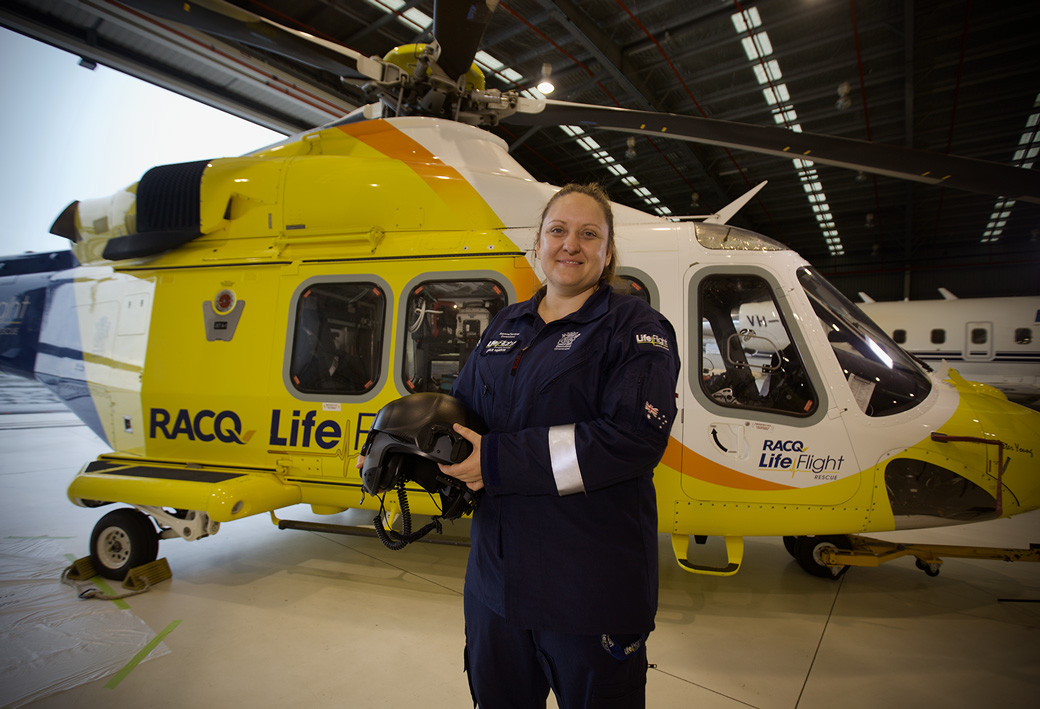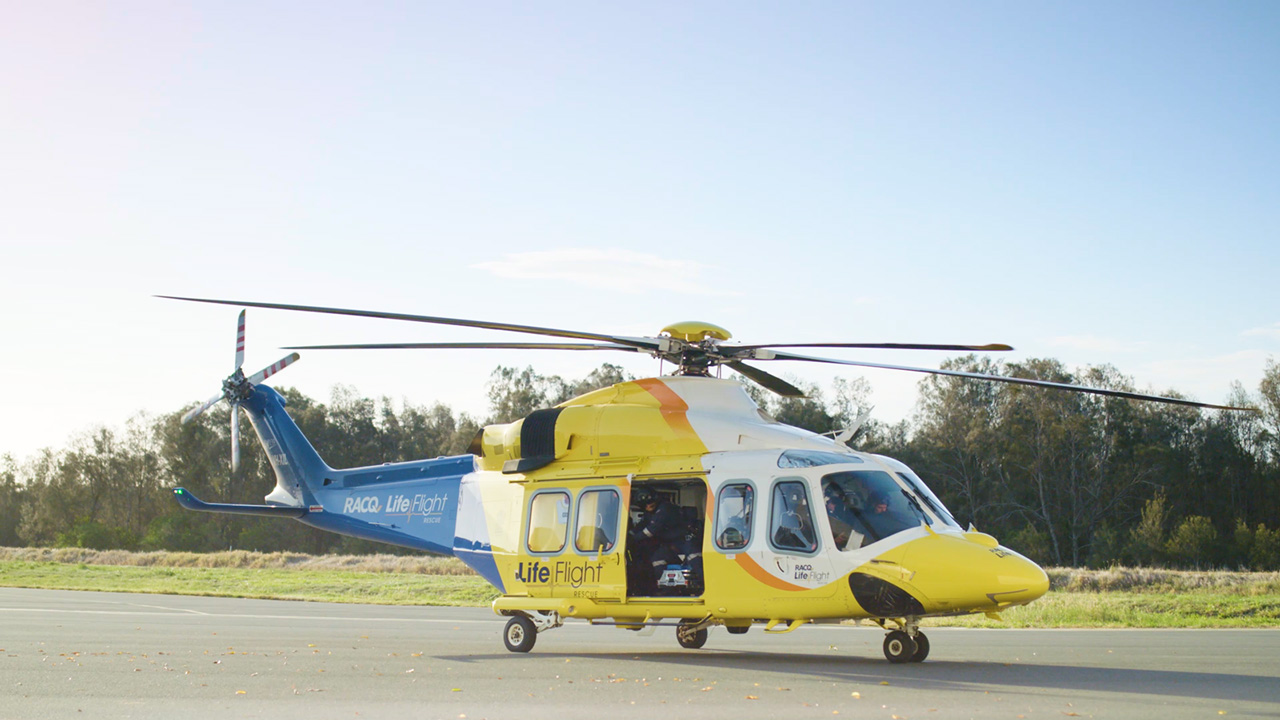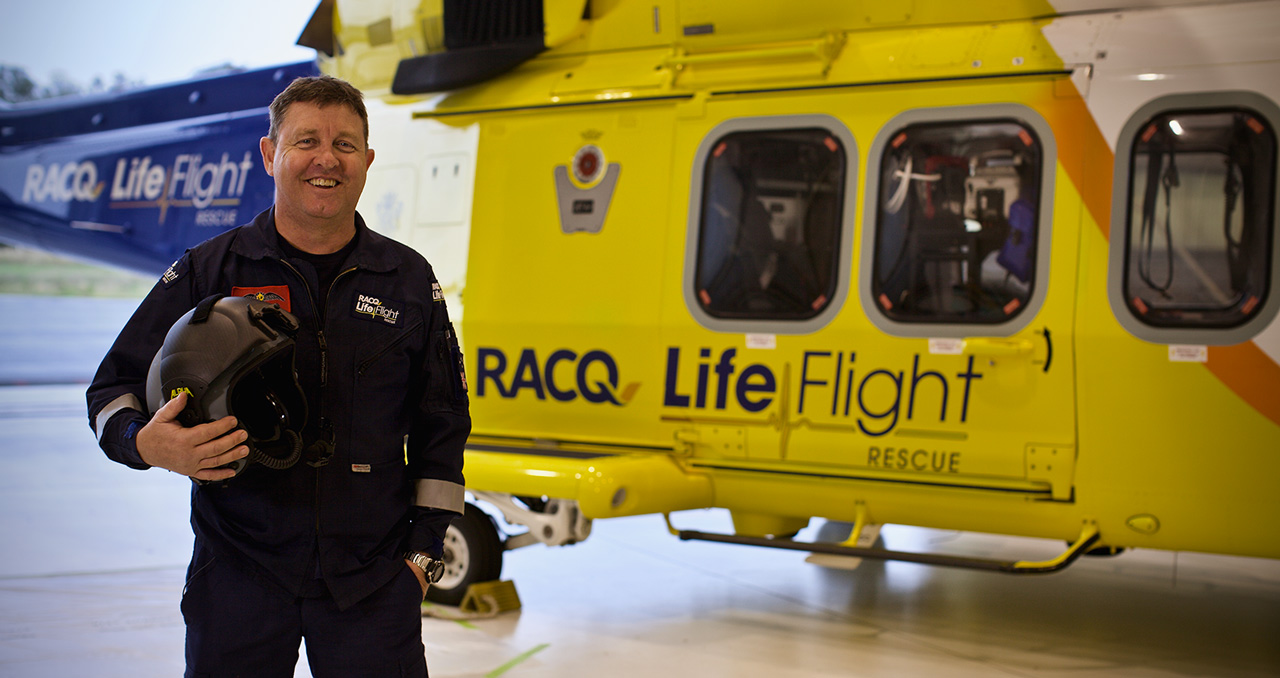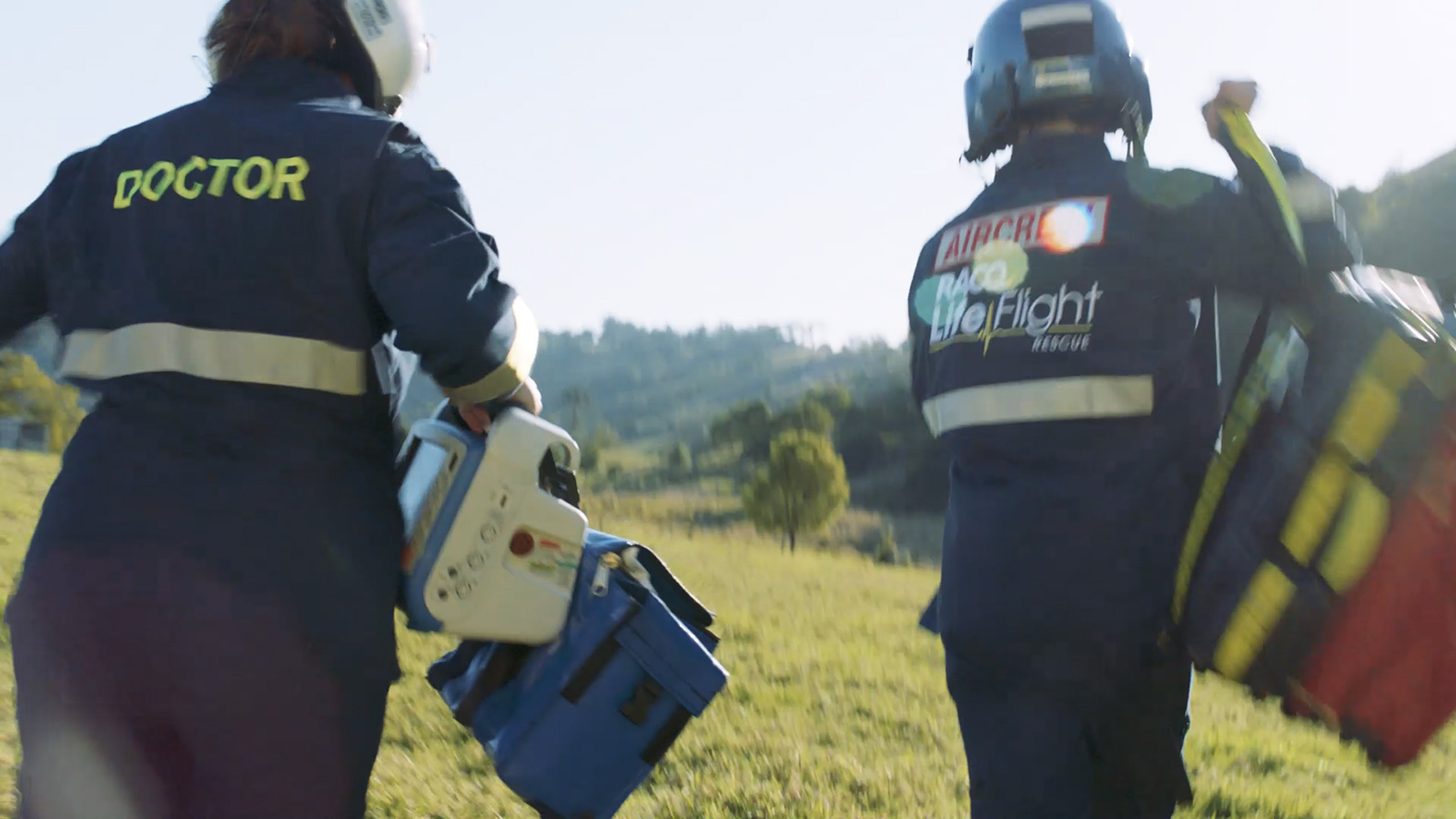
When you live outside of the metropolitan areas in a state as large and diverse as Queensland, access to facilities and services can often be severely compromised.
Our state is huge - 1,727,000 square kilometres in size, making it nearly five times the size of Japan and seven times the size of Great Britain. So, when you consider that more than half of Queensland’s five-million-plus population lives outside the greater Brisbane area, it would be a particularly frightening prospect to face such access issues when dealing with an emergency.
Few people understand this better than Carlie Manson and Dave Bashir, and it is a huge reason why they do what they do. They are part of a dedicated team that operates from a base located at Brisbane Airport, and when you discover what they do from the airport, you will become instantly thankful to have them bridging the distances across our state.
Carlie and Dave are part of RACQ LifeFlight Rescue, providing aeromedical intervention to rural and remote communities which can often mean the difference between life and death.
Carlie Manson has been a Flight Nurse for RACQ Lifeflight Rescue for the past four years. Having previously worked within intensive care units and as a flight nurse with the Royal Flying Doctor’s Service, Carlie is the best possible advocate when it comes to explaining the importance of world-class aeromedical care to Queensland.
“Being based at Brisbane Airport gives our patients great access to some of the best hospitals in the state. We are placed to readily respond to anywhere from down to Lismore, north to Gladstone and out west to Roma and beyond. We are serviced by amazing infrastructure and world class facilities that enable us to respond rapidly and provide the highest standard of care every day.
“Air traffic control supports the work we do by providing medical priority for departures and arrivals and often accommodates our changing plans at short notice. When time matters, every little bit helps.”
The Brisbane Airport base is part of a much larger not-for-profit organisation. What began as a single aircraft helicopter rescue service more than 40-years ago has evolved into a fleet of 10 helicopters operating 24/7 from seven base locations across Queensland – and that’s just the helicopter arm of the organisation.
“Being able to help Queenslanders when they need it most is a privilege. Seeing relief in people’s faces when you are able get them to where they need to be is an incredibly rewarding feeling,” said Ms Mason.
Annually, RACQ LifeFlight Rescue crews performed more than 2,000 critical missions valued at around $25 million, but there is never a cost to patients. It’s no wonder that Carlie loves coming to work every day.
“No two days are the same, every day and every job brings new challenges. Walking into work in the morning you simply have no idea what the day could bring. Anything from transporting an unwell child to specialist care from a rural facility or landing on the roadside to assist at the scene of a motor vehicle accident.“
In FY19, the Brisbane-based RACQ LifeFlight Rescue crew alone – usually consisting of a pilot, co-pilot, critical care doctor and flight nurse - flew 508 critical missions. As one of the busiest bases, it’s not unusual for the crew to undertake three to four missions a day. The top five categories they typically respond to are cardiac conditions, neonatal/paediatric, illness/infection, respiratory conditions, and stroke/neurological conditions.
For Chief Pilot Dave Bashir, being at the helm of the iconic blue and yellow helicopters, ensuring the safety of the crew when responding to emergency situations, is a responsibility he feels privileged to have.
“RACQ Lifeflight Rescue has been my way of life for more than 15 years, it’s more of a family for me as I’ve made friendships that will last a lifetime. The medical crew put a lot of trust in us.”
Having previously worked in general aviation within various helicopter companies, Dave been involved in around 4,000 missions with RACQ Lifeflight Rescue so far and now couldn’t imagine doing anything else.
“It really comes back to the work and the people we work with. Collectively, we can go to these missions and 99 per cent of the time they are successful, and you are making a difference to someone else’s life. To me, you can’t get much better than that.”
In an environment where access to medical care can take hours by road, RACQ Lifeflight Rescue offers a lifeline of hope to rural and remote communities. Dave is thankful for the location of the Brisbane Airport base for several reasons, including its proximity to some of Australia’s leading hospitals.
“We are perfectly positioned centrally for our helicopter operations and having our head office and training academy close by is a bonus.”
While Dave concedes he has never lived on a large property or lived remotely, he understands the importance of services like RACQ Lifeflight Rescue for those who do.
“If I was 200 miles from Tara, I know that if I was sick or injured and I could get a call in, that the Lifeflight helicopter wouldn’t be far away if I needed it. It must be comforting to know that help is at hand around the clock.
“There are a lot of people here today that wouldn’t be here if it wasn’t for Lifeflight.”
In the most beautiful and poetic similarity, Carlie explains that Lifeflight wouldn’t be here today if it weren’t for the support of a lot of people.
“Our corporate and community support is invaluable in what we do. From the support of large organisations like RACQ and Brisbane Airport Corporation, through to the countless volunteers who sell our LifeFlight teddy bears and hold fundraisers every weekend, our team would not be in the air without the support of our team on the ground.”




